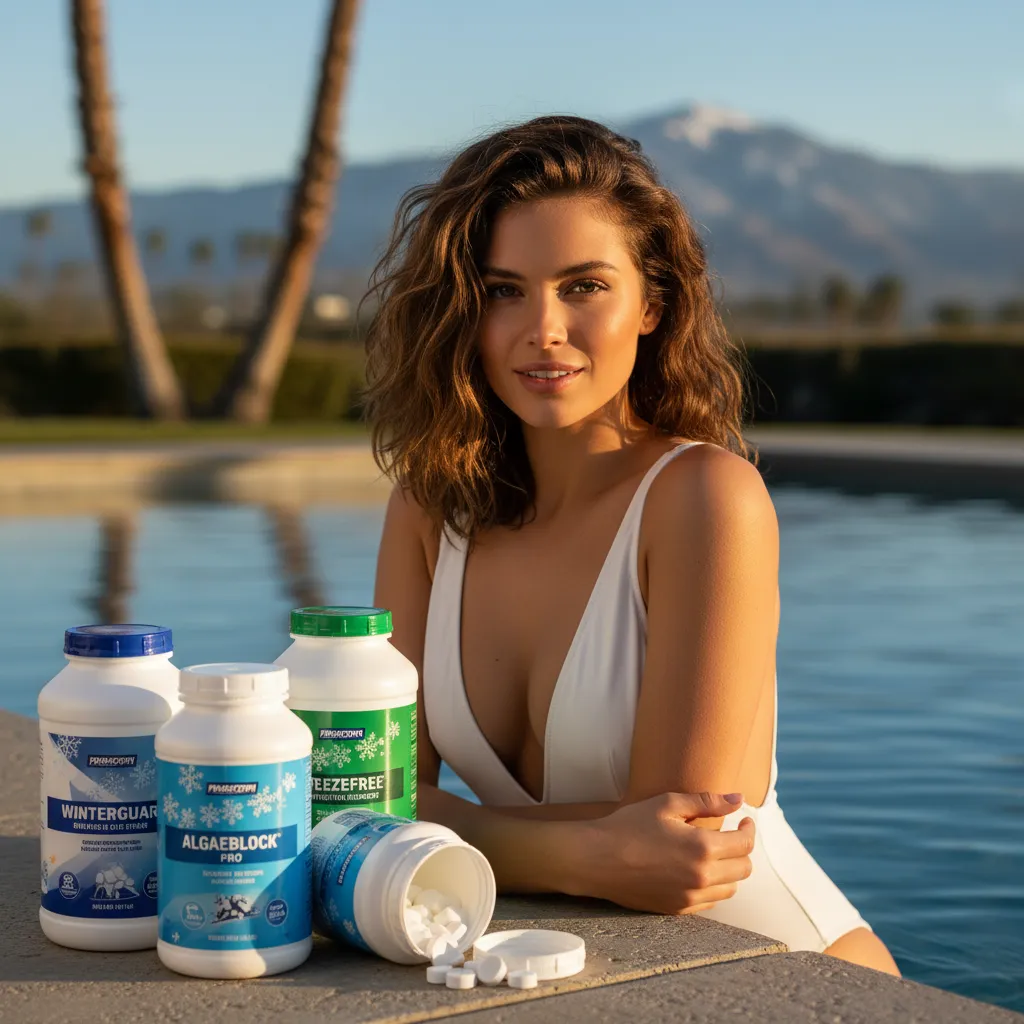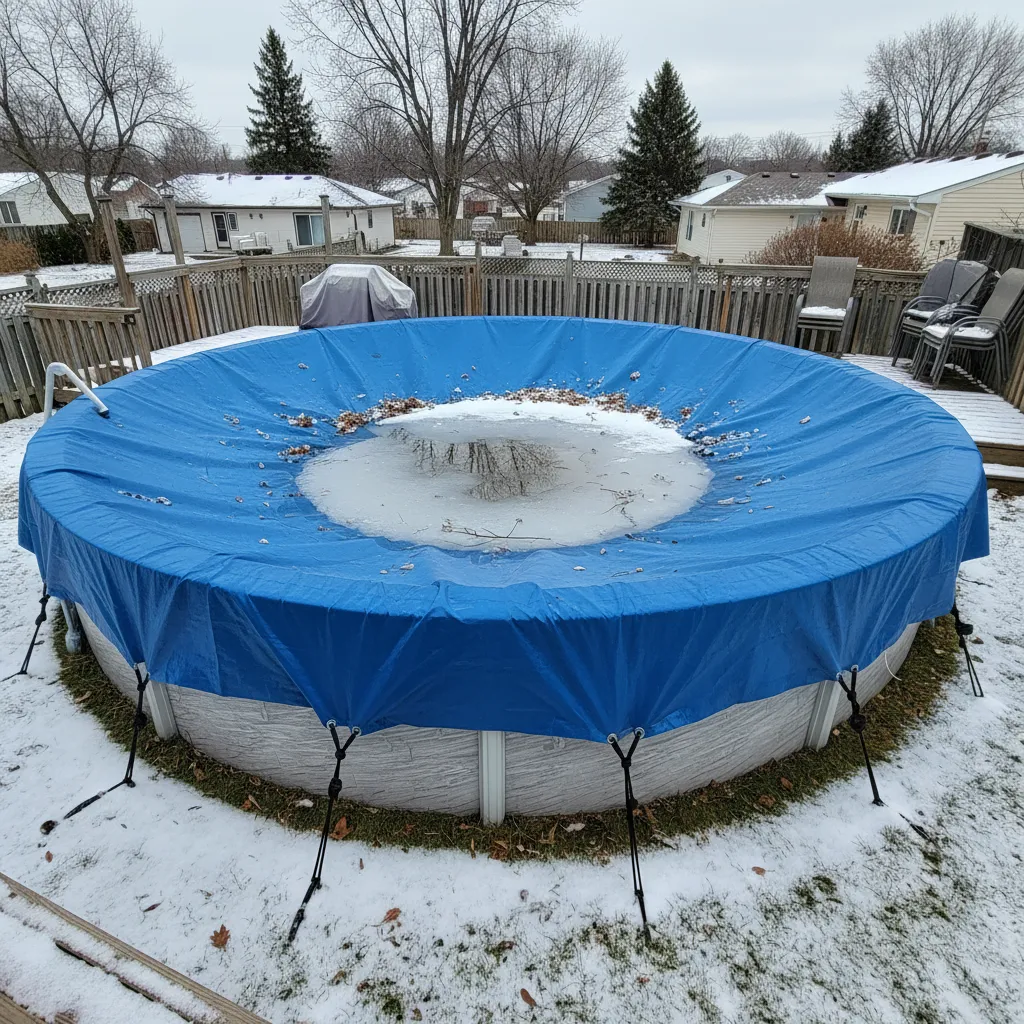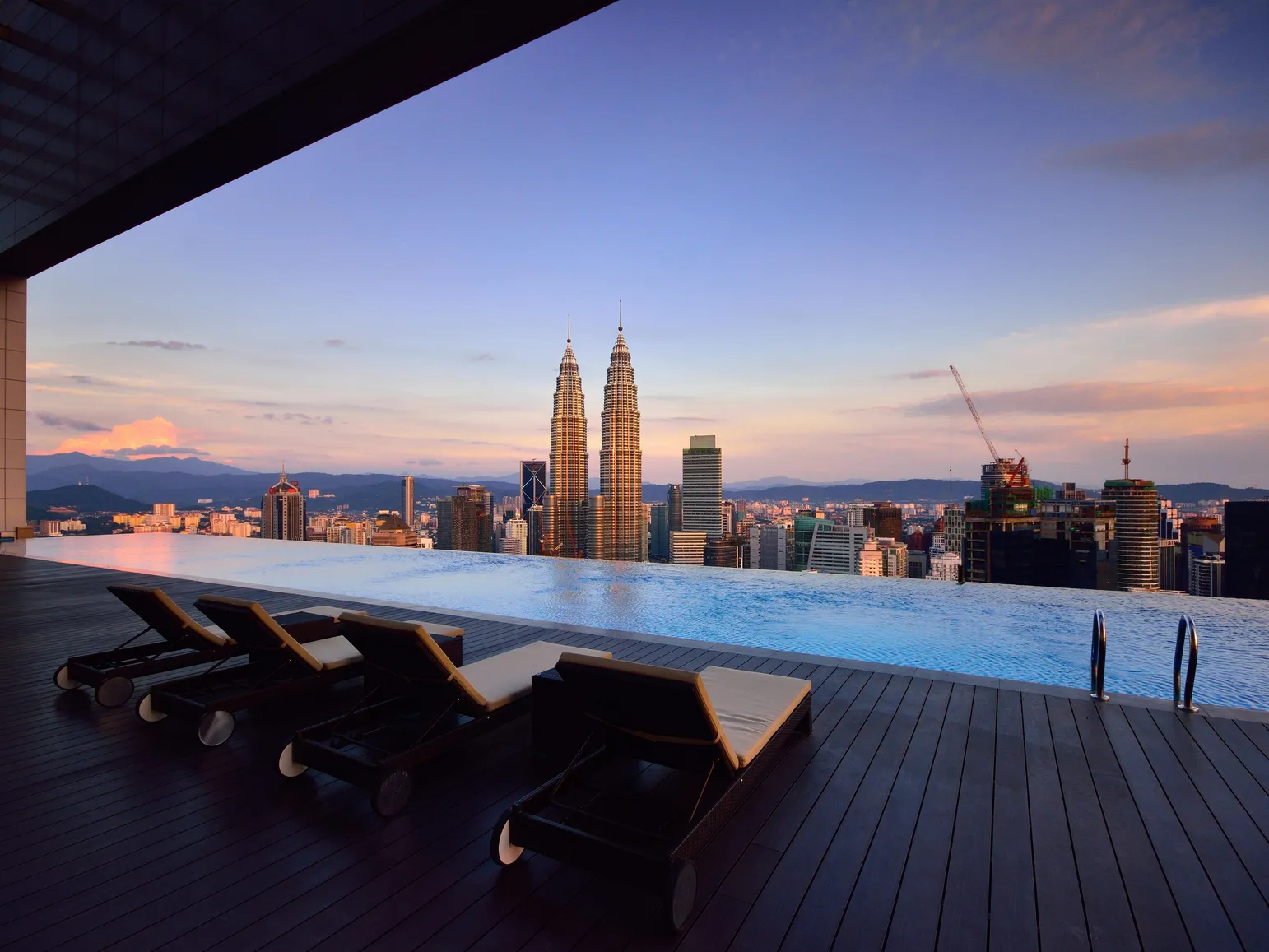Pool Heat Pump Calculator: Find the Right Size for Your Pool
Published on: May 7, 2025 | Last Updated: April 13, 2025
Written By: Lila Fairholme
Choosing the right pool heat pump saves energy and keeps your pool comfortable. This calculator helps you find the ideal heat pump size based on your pool’s unique needs. You’ll need to know your pool’s volume, current temperature, and desired temperature.
Pool Heat Pump Calculator
How to Use This Calculator
- Enter your pool’s total water volume
- Input current and desired temperatures
- Select your local climate type
- Click “Calculate” for results
Note: This calculator estimates general requirements. Always consult a professional for exact sizing.
Crucial Winterizing Products
"The all-in-one solution for a guaranteed clear spring opening."
All-in-One Closing Chemical Kit
Winter demand is high - check stock
"The 'set & forget' option. This is the easiest winterizing I've ever done."
Simple 3-in-1 Winterizing Balls
Winter demand is high - check stock
"Invest once to protect your liner and prevent a swamp in the spring."
Heavy-Duty Winter Pool Cover
Winter demand is high - check stock
Key Factors Influencing Pool Heat Pump Sizing
Pool Volume and Surface Area
Accurate pool volume measurement forms the foundation of heat pump sizing. Calculate gallons using length × width × average depth × 7.5. Surface area (length × width) determines heat loss rates. A 16×32-foot pool with 4-foot depth contains 15,360 gallons and 512 sq.ft. surface area. Larger volumes require higher British Thermal Unit (BTU) outputs. To ensure your pool stays warm, it’s important to know the right heater size for your needs. A pool heater size calculator can help you find the perfect fit for your specific pool dimensions and desired temperature.
Climate Zone and Ambient Temperature
USDA Hardiness Zones directly impact heating demands. Zone 7 (Virginia) requires 25% more BTUs than Zone 10 (Florida) for identical pools. Heat pumps operate efficiently at 45°F+ ambient temperatures. Below this threshold, capacity decreases by 30-50% depending on model specifications. This difference in heating needs affects what is considered an ideal pool temperature. Generally, many people believe the ideal pool temperature is around 78°F for comfort and enjoyment.
Desired Temperature Rise and Usage Patterns
Standard calculations assume 1-2°F hourly temperature gain. Heating from 60°F to 85°F requires different capacity than maintaining 80°F in cooling weather. Continuous-use pools need 20% more capacity than weekend-only installations. Consider bather load – each swimmer adds 500-800 BTU/hr heat loss. In winter, keeping the pool warm is even more challenging. Maintaining the right temperature in colder months can greatly enhance the swimming experience.
| Temperature Rise | BTU Multiplier |
|---|---|
| 5°F | 1.0x Base |
| 10°F | 1.3x Base |
| 15°F | 1.7x Base |
| 20°F | 2.1x Base |
Heat Pump Efficiency (COP Rating)
Coefficient of Performance (COP) measures electrical-to-thermal conversion efficiency. Modern units range from COP 5.0-6.5. A 100,000 BTU heat pump with COP 5.0 consumes 5.8 kW/hour. Higher COP models reduce run time but increase upfront costs by $800-$1,200 per 0.5 COP improvement.
Heat Loss Factors
Evaporation accounts for 70% of pool heat loss. Wind exposure increases evaporation rates by 15% per 5 mph breeze. Night operation in 60°F weather loses 2-4°F without covers. Subsurface heat transfer varies by decking material – concrete loses 12% more heat than composite materials.
Pool Heat Pump Sizing Guidelines by Volume
Small Pools (10,000-20,000 Gallons)
Typical residential installations require 75,000-125,000 BTU units. For 15,000-gallon pools in Zone 7, allocate 6.5 BTU per gallon. Nighttime use necessitates 15% oversizing. Example: 15,000 gal × 6.5 = 97,500 BTU → 110,000 BTU unit. When considering larger pools, like a 16×32 pool, the volume of water increases. A 16×32 pool typically holds around 20,000 gallons, which affects the required heating capacity.
Medium Pools (20,000-30,000 Gallons
Commercial-grade 150,000-225,000 BTU systems handle these volumes. Saltwater pools need corrosion-resistant titanium heat exchangers. Windy locations require 8% capacity increases per 100 sq.ft. exposed surface area. The management of ideal salt level is also crucial for the overall health of the pool. Maintaining the ideal salt level ensures a comfortable swimming experience and protects pool equipment.
Large Pools (30,000-40,000 Gallons)
High-output 250,000-350,000 BTU heat pumps maintain 80°F in Olympic-sized pools. Dual-unit configurations provide redundancy. Expect 3-5 day heat-up times for initial warm-ups from 50°F. These powerful units are crucial for ensuring comfortable swimming conditions. A pool heat pump can also help in reducing overall energy costs while keeping your pool inviting all season long.
Commercial Pools (40,000+ Gallons)
Industrial heat pumps with 400,000+ BTU capacities use scroll compressors and dual-speed fans. Waterpark installations often combine heat pumps with solar thermal arrays. Maintenance costs average $0.15-$0.30 per gallon annually. For facilities like these, it’s important to also consider the energy costs associated with pool pumps. A pool pump electricity cost calculator can help estimate the operating expenses and optimize energy use.
Also See: Evaporation Loss Calculator

Advanced Sizing Considerations
Solar Cover Impact
Quality solar blankets reduce heat loss by 50-70%. This allows downsizing units by 20% when covers are used 12+ hours daily. Polyethylene covers provide 45% retention, while reinforced vinyl offers 65%. Using a solar blanket can keep your pool warm and pleasant. This makes swimming more enjoyable, extending the season for pool fun.
Windbreak Effectiveness
Proper landscaping or fencing decreases wind-related heat loss. A 6-foot privacy fence reduces BTU requirements by 18% in exposed locations. Lattice barriers provide 9% reduction with 50% airflow. Adding a fence around your above ground pool can also help control temperature and reduce evaporation. A sturdy above ground pool fence is essential for safety and ensures peace of mind while enjoying your pool.
Nighttime Operation
Heat pumps running after sunset consume 25% more energy due to lower ambient temperatures. Programmable thermostats should maintain temperatures within 5°F of daytime settings to prevent overworking. Similarly, running a pool pump 24/7 can help maintain the water quality. It’s important to consider energy efficiency when deciding on the operation schedule for your pool pump.
Comparing Heat Pump Types
| Type | COP Range | BTU Capacity | Installation Cost |
|---|---|---|---|
| Air-Source | 5.0-6.2 | 75K-140K | $3,800-$6,200 |
| Geothermal | 7.5-8.3 | 100K-250K | $12,000-$18,000 |
| Solar-Assisted | 9.0-11.0 | 50K-120K | $9,500-$14,000 |
Seasonal Performance Variations
Winter operation below 45°F requires auxiliary gas heaters in northern climates. Heat pump efficiency drops 30% at 50°F compared to 80°F operation. Southern states achieve 8-month swimming seasons with proper sizing. To maintain warm water during colder months, a pool pump heater can be very effective. These heaters work alongside existing systems to ensure comfortable swim temperatures throughout the year.
Energy Cost Calculations
Formula: (BTU Capacity ÷ COP) × Electricity Cost ÷ 3,412 = Hourly Cost. A 120,000 BTU unit with COP 5.5 in California ($0.22/kWh): (120,000 ÷ 5.5) × 0.22 ÷ 3,412 = $1.41/hour. Annual costs average $450-$900 for residential pools. These figures are important when considering the total expenses of having a pool. The overall cost of installing a pool in California can vary greatly depending on factors like size and materials.

FAQs – Pool Heat Pump Sizing
What Happens With Undersized Units?
Short cycling occurs when units can’t maintain temperatures, reducing compressor lifespan by 40-60%. Continuous operation increases energy bills 25-35%.
Multiple Smaller Units Vs Single Large?
Dual units provide redundancy but increase installation costs by $1,200-$2,500. Zoned heating saves energy for pools with divided deep/shallow areas.
Humidity Impact on Performance?
High humidity improves efficiency by 5-8% through latent heat recovery. Arid climates require 7% larger units for equivalent performance.
Specialized Scenarios
Saltwater Pools
Require cupro-nickel or titanium heat exchangers. Expect 12-15% higher initial costs. Maintain salinity levels below 4,000 ppm to prevent corrosion.
Indoor Pool Requirements
Dehumidification systems must complement heat pumps. ASHRAE standards recommend 1 air change per 4 hours. Ventilation affects heat loss by 20-30%.
Benefits Of Proper Sizing
- Reduces energy waste by 25-40%
- Extends equipment life to 12-15 years
- Maintains ±1°F temperature consistency
- Lowers annual maintenance costs by $150-$300
Professional Installation Factors
Licensed installers follow NEC Article 680 for pool equipment. Requires 240V dedicated circuits with GFCI protection. Placement must allow 24″ clearance on all sides. Improper installation voids manufacturer warranties.
For detailed analysis of your pool’s specific requirements, visit My Pool Calculator to explore advanced configuration scenarios.





